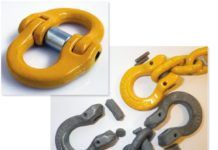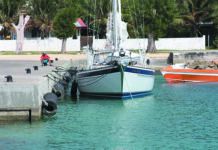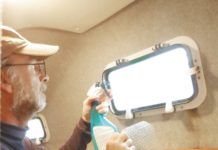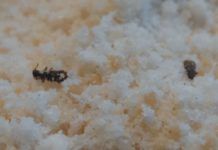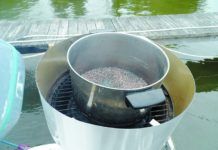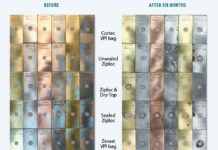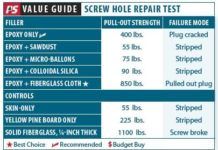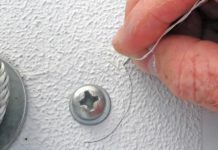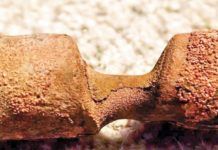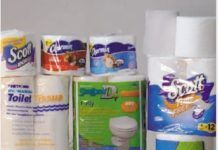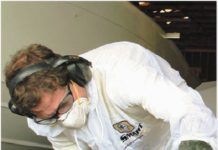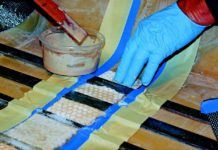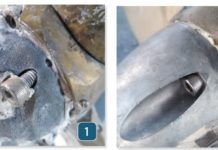Reviving Fuel Filter Beads – Again and Again
We wished they could be as maintenance free as the carbon canister on your car, but they lack the regeneration cycles programmed into your car. The makers say the silica gel resin should be replaced annually, but Practical Sailor testers have found that three years is about right for diesel and five years for E-10 gasoline.
No-Rust Bags? A Bit of a Bust.
Cleaner than coil and grease coatings, these bags protect areas that are hard to reach. Additionally, the protective coating does not need to be removed, since it is very thin and will slowly evaporate once the part is removed from the bag.
A Stronger Screwhole Repair
The fastest way to attach light hardware to a cored deck is a self-tapping screw. It is also the fastest way to have hardware rip out of the deck and end up with a wet core and delaminated deck. But how to replace screws that have gotten loose or prevent a wet deck in your future? One method is to drill and over-sized hole, remove some core, fill the enlarged hole with epoxy, and then replace them with small through bolts (see Spreading the Load Practical Sailor, August 2016). But what if the backside is inaccessible? Can we create an improved repair by filling and reinstalling a self-tapping fastener, without major surgery? What sealing and filling material is best?
Snap Extenders for Old Canvas
Sunbrella does not shrink. That is the mantra, and for covers and dodger that are left in place, it seems to be the true. It stretches a little when wet, and so long as it is maintained under tension while it dries, it retains it shape. So says Sunbrella. While this seems true for tensioned cloth (our dodger still fits) and it hardly matters for a sail cover, our real world experience with removable Sunbrella window covers has been different, shrinking as much as 5 percent over a period of years. The problem, no doubt, is that these are worst case scenario, repeatedly removed while still wet with dew and allowed to dry. The end result was that the covers became difficult to install and some of the snaps were being ripped out by the excessive tension.
Magic Fix for Hairline Cracks in Gelcoat
Spider cracks can indicate impact damage or serious structural problems that will need to be addressed to prevent spreading, but most often they result from relatively inflexible gelcoat that is too thick. Stress by thermal expansion or when bulkheads and liners were installed can cause minor flexing. Cracks from larger issues-a winch, for example, that was inadequately mounted-will need to be fixed before cosmetic repairs begin.
Stopping Centerboard Pin Corrosion
Im trying to determine the cause of erosion of the centerboard pivot pin from Arcturus, our 36-foot Soverel keel/centerboard cutter. It is a -inch diameter silicon bronze pin installed new in 2004. I removed the centerboard a few weeks ago and was surprised to see that the pin was heavily corroded. Ive attached a few pictures of the pin. The boat has a fiberglass encapsulated lead keel, with the lead bedded in a resin/sand mixture. The pivot pin fits in a hole drilled through the keel and centerboard trunk (which has encapsulated lead on both sides).
2017 Top Sailing Gear
Each year, just prior to the fall boat show season, Practical Sailor editors consult with our testers to come up with a select list of Gear of the Year from the previous 12 months of testing. For most of the 2016-2017 testing season we focused on essential everyday products that owners of boats of all sizes-with a few exceptions-rely on. While our testers appreciate new technology, they recognize that a safe passage often depends on the reliability of the weakest link, and that weakest link is often a seemingly minor component that gets little attention. In short, our Editors Choice list is not the sexiest product roundup, but if youre serious about keeping your electrical connections corrosion free, making professional repairs on a blue-collar budget, maintaining a safe speed in a steep following sea, or looking for a way to manage a big genoa without upgrading to an electric winch, youll appreciate it.
The Best Respirators for the Boatyard
Athough falling off a ladder or cutting yourself with a sharp tool are the most common boatyard injuries, damage from the foul air we breathe is more insidious. Marine paints contain solvents that can make you dizzy at best or increase cancer risk at worst. Dust from sanding wood is usually only a nuisance, but sanding bottom paint or grinding fiberglass presents serious health risks. Fortunately, theres a wealth of industrial experience with contaminated air…
Esoteric Fibers Call for Epoxy
Theres little debate over the adhesive quality and toughness of epoxy resin-just look at where its being used. We hear about its presence in crucial structures such as aircraft wings, race car bodies and high-end custom racing yachts. But it takes a little familiarity with engineering lingo to help us understand why epoxy trumps its ester relatives.
What’s the Best Anode Material?
Every fall, as the hauled-out boats are sardined into boatyards, a walking tour reveals the casualties from the underwater war. Saildrives are deeply pitted and shedding paint. Bottom paint is burned near seacocks. Folding props no longer fold. Most often, these losses are blamed on the zinc anodes-or lack of them.











